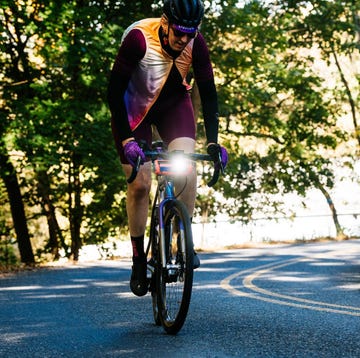Cycling is often viewed as an environmentally friendly pursuit. But the truth is that racing, training, and generally recreational riding is not all that green. This is because while riding a bike in isolation doesn’t produce much greenhouse gasses, the production, shipping, and storage of all the things that go into a bike do. For a bicycle to have a substantial environmental impact in reducing greenhouse gas emissions, riding that bike must replace car trips.
Trek has recently released its third sustainability report. The first one, released in 2021, was a wake-up call for many brands and has since prompted others like Merida and Brompton to publish such reports. You can find the full report here, but what struck me was the calculation that an average Trek bike requires about 380kg of CO2 to produce between 2023 and 2025. Trek aims to reduce this to 160 kg of CO2 by 2029.
Further down in the report, Trek also estimates that the average car emits roughly 404g of CO2 for every mile it is driven. That means a bike needs to be used instead of a car for 940 miles to offset its manufacturing emissions.
Commuting to work by bike instead of in a car is what many folks will think of first. But that might not be practical for every person. Still, with more than 52% of all car trips in the United States being less than three miles, there are certainly options. Things like errands, grocery runs, and even kid pickups and drop-offs can be done with the right bike.
If these are things you don’t want to start doing or simply don’t want to add a utility bike to your life, then consider merely avoiding driving to go ride. For roadies, that can look like riding to the group ride or the training crit instead of driving there. For mountain bikers, that can look like opting to ride a local trail close enough to ride to rather than driving to one further away.
Driving accounts for about 12% of global greenhouse gas emissions. The bike industry accounts for a relatively small slice of that, and 95% of those emissions happen in the supply chain, according to Trek. However, when riders choose to go by bike instead of car, even for occasional trips, over the bike's lifetime, that can have a considerable impact beyond simply offsetting the CO2 generated when the bike was produced. In other words, leave the car at home and ride your bike when you can.
Test Editor Dan Chabanov got his start in cycling as a New York City bike messenger but quickly found his way into road and cyclocross racing, competing in professional cyclocross races from 2009 to 2019 and winning a Master’s National Championship title in 2018. Prior to joining Bicycling in 2021, Dan worked as part of the race organization for the Red Hook Crit, as a coach with EnduranceWERX, as well as a freelance writer and photographer.














